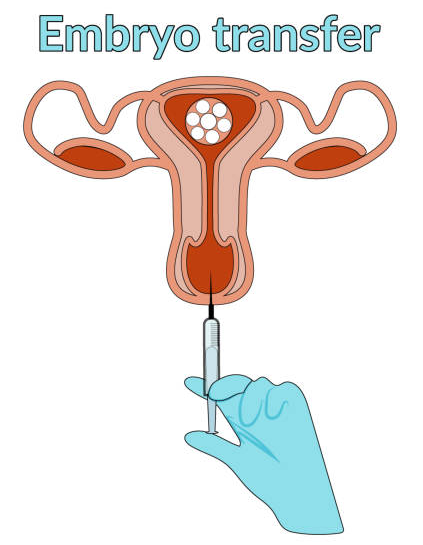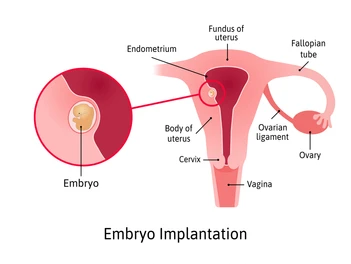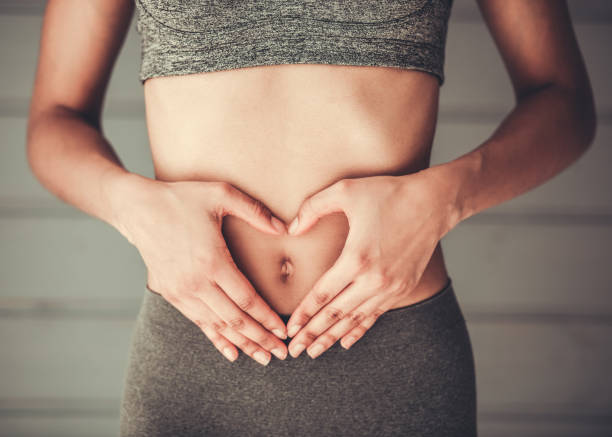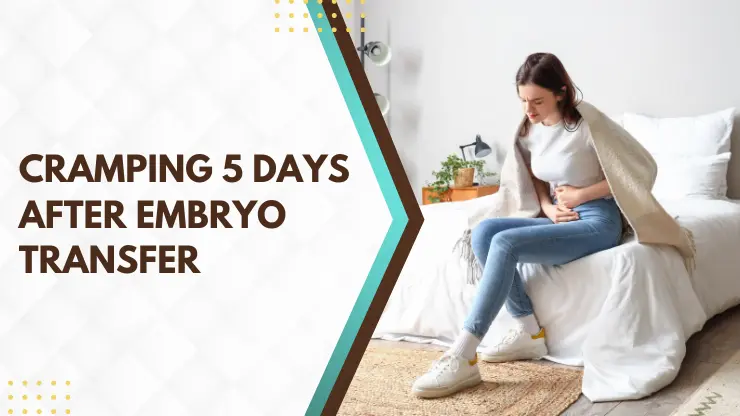Experiencing cramping 5 days after embryo transfer can cause anxiety for many patients undergoing IVF treatment. This discomfort may lead to worries about the success of the procedure and the health of the developing embryo. Dr. Nikhil Chitnis, a distinguished IVF doctor in Thane, emphasizes that mild cramping is common post-transfer. He advises patients to monitor their symptoms and consult a specialist if the pain worsens.
At Dr. Malatibai Chitnis Hospital, one of the best IVF Centre in Thane, Dr. Nikhil Chitnis offers comprehensive fertility treatments focusing on patient care and advanced medical technology. With extensive experience in reproductive medicine, he provides expert guidance and personalized care to help patients achieve their dream of parenthood.
Wondering if your cramping is normal? Let’s dive into the details.
Is It Normal to Have Cramping 5 Days After Embryo Transfer?

Cramping at this stage is a common concern for many patients. Mild cramping can be a normal part of the process as the embryo implants into the uterine lining. It is a positive sign indicating the embryo is attempting to establish itself. This cramping is often described as mild and similar to menstrual cramps. However, the intensity and duration can vary from person to person.
It’s important to differentiate between mild cramping and severe pain. Mild cramping is typically brief and can be accompanied by other symptoms, such as light spotting, which is often normal. If you experience severe or persistent cramping, contact your IVF doctor to rule out conditions like ectopic pregnancy or other complications.
Worried about post-embryo transfer cramping? Schedule a consultation with a seasoned IVF expert today.
What Causes Cramping 5 Days After Embryo Transfer?
Several factors can contribute to 5 days post embryo transfer cramping. Understanding these causes can help alleviate concerns:

- Embryo Implantation:
The process of the embryo embedding itself into the uterine lining can cause mild cramping. This is a natural part of the implantation process.
- Hormonal Changes:
Hormonal fluctuations, particularly an increase in progesterone, can lead to uterine cramping as the body adjusts to early pregnancy.
- Progesterone Supplements:
Medications and supplements used during IVF treatment, such as progesterone, can cause cramping as a side effect.
- Uterine Stretching:
Mild cramping can occur as the uterus changes and expands to accommodate the embryo.
- Increased Blood Flow:
The increased blood flow to the pelvic area during early pregnancy can lead to a sensation of cramping or fullness.
- Anxiety and Stress:
Emotional stress and anxiety about the IVF process can sometimes manifest as physical symptoms, including cramping.
Now, let’s find out how long this cramping should last.
How Long Does Cramping Last After Embryo Transfer?

The duration of cramping after fresh or frozen embryo transfer can vary. For most women, mild cramping lasts for a few days as the embryo implants. It usually subsides on its own and does not require medical intervention.
If the cramping persists beyond a week or is accompanied by severe pain or heavy bleeding, it’s essential to seek medical attention. Persistent cramping may require further evaluation to ensure everything is normal and rule out any issues.
Are you experiencing prolonged cramping? Book an appointment with a professional now.
Looking for ways to relieve cramping? Here are some tips.
What Can You Do to Relieve Cramping 5 Days After Embryo Transfer?

To alleviate cramping after an embryo transfer, consider the following tips:
- Rest: Take it easy and avoid strenuous activities. Resting can help your body adjust and reduce cramping.
- Hydration: Drink plenty of fluids to stay hydrated. Proper hydration can alleviate cramping and support overall health.

- Mild Pain Relief: If your doctor approves, use OTC pain relievers like acetaminophen. Avoid NSAIDs like ibuprofen unless advised by your specialist.
- Heat Therapy: Apply a warm compress or heating pad to your lower abdomen. This can soothe muscle tension and reduce cramping.

- Gentle Exercise: Engage in gentle exercises like walking or Yoga. Light physical activity can improve blood flow and reduce discomfort.
- Dietary Adjustments: Eat small, frequent meals and avoid foods that can cause bloating. A balanced diet supports overall well-being and can minimize cramping.

- Relaxation Techniques: Practice deep breathing, meditation, or other relaxation techniques. Reducing stress can help manage cramping.
- Consult Your Doctor: Consult your healthcare expert for personalized advice and rule out severe conditions if the cramping persists or worsens.
Experiencing cramping 5 days after FET? Consult a proficient IVF specialist for a detailed evaluation.
Could cramping be a good sign? Find out more below.
Can Cramping 5 Days After Embryo Transfer Indicate a Successful Pregnancy?

5 days post embryo transfer cramping may signal successful implantation. This sensation occurs as the embryo attaches to the uterine wall and is typically mild. It indicates that the embryo properly embeds itself, which is crucial for a successful pregnancy. However, cramping alone is not a definitive sign of pregnancy. It’s essential to wait for a pregnancy test or further evaluation.
While cramping can be an encouraging sign, it’s essential to consider the overall context of your symptoms and seek confirmation and reassurance from your IVF specialist. Keeping a close eye on your symptoms and maintaining open communication with your doctor can help ensure the best outcome for your pregnancy.
Conclusion
Understanding cramping 5 days after embryo transfer is essential for managing anxiety and knowing when to seek help. With the proper care and support, you can navigate this phase with confidence and reassurance.
Dr. Nikhil Chitnis and his team of experienced professionals at Dr. Malatibai Chitnis IVF Centre in Thane are dedicated to providing expert care and support throughout your fertility journey.
Need help managing post-transfer symptoms? Contact an experienced IVF doctor for expert advice and solutions.
Do you still have questions? Let’s address some common concerns.
Frequently Asked Questions:
Can diet influence cramping after embryo transfer?
Certain foods can affect digestion and potentially lead to cramping. The best approach is to follow a balanced diet and avoid foods that cause bloating.
What should I do if I experience severe cramping after embryo transfer?
Contact your IVF specialist immediately to rule out complications and receive appropriate care.
Should I avoid physical activity if I experience cramping after embryo transfer?
It’s best to avoid strenuous activities, but light movement like walking can be beneficial.
Is it normal to experience cramping and no bleeding after embryo transfer?
Cramping without bleeding can be normal and is often related to the embryo implanting into the uterine lining.
When should I take a pregnancy test after embryo transfer?
Your specialist will advise you on the best time, typically 10-14 days post-transfer.
Reference links:
https://www.healthline.com/health/infertility/positive-signs-after-embryo-transfer
https://www.medicalnewstoday.com/articles/implantation-symptoms

